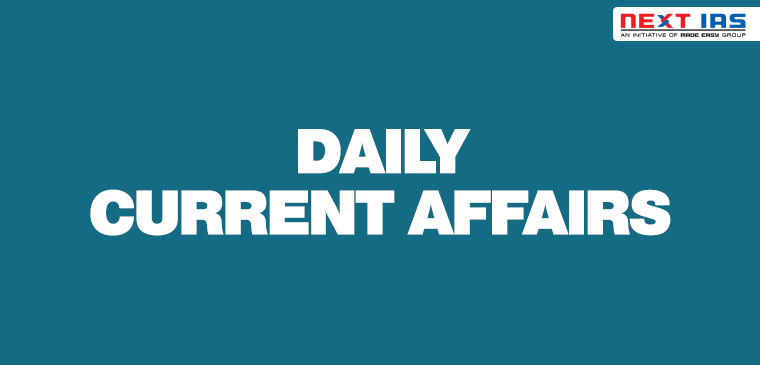
In News
Recently, the Standing Committee on Water Resources recommended setting up a permanent National Integrated Flood Management Group (NIFMG ).
About
- As frequent floods ravage different parts of the country, a Parliamentary panel has recommended that the Union Government should take up the responsibility of flood management, in the form of a National Integrated Flood Management Group, chaired by the Union Minister of Jal Shakti
- The committee also recommended that chief ministers of the states concerned should be the members of this group and the group should meet at least once a year.
- And, States have often demanded natural calamities to be declared as national ones, especially after floods in a region.
|
How does the Law define a Disaster?
|
Provisions to Classify a National Calamity
- There is no provision, executive or legal, to declare a natural calamity as a national calamity.
- The existing guidelines of the State Disaster Response Fund (SDRF)/ National Disaster Response Fund (NDRF), do not contemplate declaring a disaster as a ‘National Calamity.”
Earlier Attempts in this Direction
- The 10th Finance Commission (1995-2000) examined a proposal that a disaster is termed “a national calamity of rarest severity” if it affects one-third of the population of a state.
- The panel did not define a “calamity of rare severity” but stated that a calamity of rare severity would necessarily have to be adjudged on a case-to-case basis taking into account.
- The intensity and magnitude of the calamity
- Level of assistance needed
- The capacity of the state to tackle the problem
- The alternatives and flexibility were available within the plans to provide succour and relief, etc.
- In 2001, the National Committee on Disaster Management under the chairmanship of the then Prime Minister was mandated to look into the parameters that should define a national calamity.
- However, the committee did not suggest any fixed criterion.
- The panel did not define a “calamity of rare severity” but stated that a calamity of rare severity would necessarily have to be adjudged on a case-to-case basis taking into account.
Implications of Declaration
- When a calamity is declared to be of “rare severity”/”severe nature”, support to the state government is provided at the national level.
- The Centre also considers additional assistance from the NDRF.
- A Calamity Relief Fund (CRF) is set up, with the corpus shared 3:1 between Centre and state.
- When resources in the CRF are inadequate, additional assistance is considered from the National Calamity Contingency Fund (NCCF), funded 100% by the Centre.
- Relief in repayment of loans or for grant of fresh loans to the persons affected on concessional terms, too, are considered once a calamity is declared “severe”.
|
State Disaster Response Fund (SDRF)
National Disaster Response Fund
|
Source: DTH
Previous article
Constitution (Scheduled Tribes) Order (Amendment) Bill, 2021
Next article
Facts in News


